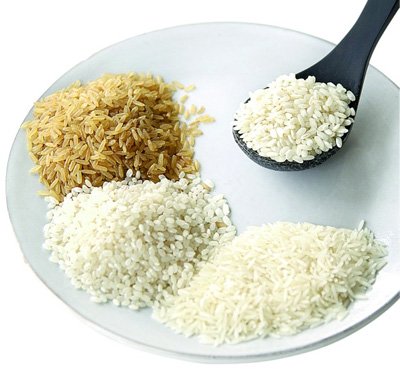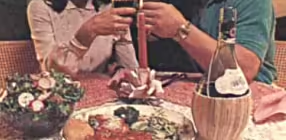We all know what rice is. But not everyone knows that it is the second most important grain crop in the world after wheat. Today, thousands of varieties of this healthy grain are known, as well as thousands of dishes that can be prepared from them. Our conversation today will be about rice!
There is one simple secret that will help a budding gourmet figure out how to choose a product to their taste. And the secret is quite simple – the properties and characteristics of dishes that can be prepared from rice depend on the shape of the rice grains.
If we describe these properties very briefly, we can trace the following dependence – the rounder the grain, the more water it absorbs during cooking, the more it boils and becomes softer, more sticky. Long rice, on the contrary, takes longer to cook, takes less water and increases mainly in length. Cooking time and taste of rice also depend on processing – polishing. The more the top layer is removed, the faster the rice cooks and the easier it absorbs water.
Below are the main types of rice
Brown rice is rice that has not been polished, but only separated from the inedible husk. The largest number of useful microelements is contained in this brown husk, which is usually removed from the rice. This rice has the lowest glycemic index and is considered the healthiest, if we can talk about rice in this way at all.
White rice or polished rice is, in a sense, the opposite of brown rice. It has gone through all the stages of processing and looks the most attractive. Snow-white grains often seem translucent. White rice, of course, loses in vitamin and mineral composition not only to brown rice, but also to steamed rice, but, nevertheless, is the most popular in the world. It cooks faster than other varieties. This is the rice that goes into sushi, which is quite popular all over the world.
Steamed rice is a special option! Rice is additionally processed with steam and some of the minerals are driven into the middle of the grains. How this happens is not entirely clear to me, but such a statement is true. It is believed that its mineral composition is richer than that of white rice, but, nevertheless, it is inferior to brown rice. In appearance, steamed rice is more transparent than white rice and has a slightly yellowish tint, but after cooking, which usually takes about 10 minutes longer than cooking white rice, it also looks white and has a useful property – it does not stick together! Steamed rice absorbs less water than white rice and even if you overcook it, it will still not stick together. Personally, I like to cook pilaf from this type of rice the most, despite the fact that in everyday life (and I do not cook pilaf every day) I prefer white – Basmati.
Classification of rice by grain shape and length
Long grain rice – it is characterized by a low content of gluten, which is responsible for the sticking of rice. It is grown in the largest quantities and is used in most dishes from simple side dishes to pilaf. It boils less than round rice. The most popular and delicious varieties of this rice are jasmine and basmati. I like the latter more, but for some reason it is also the most expensive.
Round grain rice – on the contrary, it is characterized by too much gluten and starch. As a result, this type of rice is very good for cooking soups, porridges, puddings, casseroles. In general, any dishes that should hold their shape. It absorbs the most water and cooks relatively quickly. Of course, this type of rice is used in making sushi!
Medium grain rice – combines the features of the first two and very elegantly shows them exactly where it is needed. Depending on the method of preparation, this type of rice can be either crumbly or stuck together. In a word, it is a universal type of rice, but you need to know all the intricacies of its preparation in order to get the result you expect.
There are unusual types of rice that differ in color – red, black. The color of rice is concentrated in the fruit shells, which contain the largest number of microelements. If you polish it, it will acquire the usual white color and will not stand out in any way against the background of white rice.
Wild rice is a type of rice with very long, almost black grains. It contains especially many useful microelements and fiber. This type of rice needs to be cooked especially long. It is believed that it helps reduce cholesterol levels in the body and helps cleanse the intestines.
Enterprising Chinese also invented their own “know-how” type of rice, which is obtained artificially from inexpensive starch and various additives that allow you to create rice-like grains from it. This rice stands out from the rest with its matte, opaque structure, reminiscent of chalk. Real rice should look like matte white or yellowish, if we are talking about steamed variety, glass. All rice should be uniform in color. If there are yellowish grains, then the rice was most likely stored in unfavorable humid conditions, which contributes to its spoilage. If there are many fragments, this is usually the lowest quality rice and is rather a waste or by-product of the rice industry.
Remember, the properties of rice largely depend on how it looks, and when choosing rice, look closely at its face.







